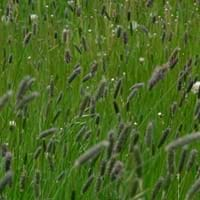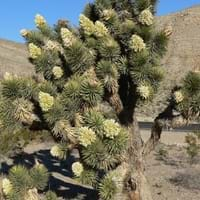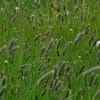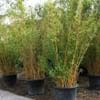Life Span
Perennial
Perennial
Type
Grass
Cactus or Succulent, Tree
Origin
Europe, Asia
Southwestern United States, Mexico
Types
not available
Not Available
Habitat
Grassland
Desert, Dry areas, Rocky areas, Sandy areas
USDA Hardiness Zone
5-8
6-10
Sunset Zone
2a, 2b, 3a, 3b, 4, 5, 6, 7, 8, 9, 10, 14, 15, 16, 17, 21, 22, 23, 24
9, 10, 11, 12, 13, 14, 15, 16, 18, 19, 20, 21, 22, 23
Habit
Clump-Forming
Upright/Erect
Flower Color
White
White, Ivory
Flower Color Modifier
Bicolor
Not Available
Fruit Color
Not Available
Light Green
Leaf Color in Spring
Green
Gray Green, Dark Green
Leaf Color in Summer
Light Green
Gray Green, Dark Green
Leaf Color in Fall
Green
Gray Green, Dark Green
Leaf Color in Winter
Tan
Olive, Gray Green, Dark Green
Leaf Shape
Grass like
Linear
Plant Season
Spring, Summer, Fall, Winter
Spring, Summer, Fall, Winter
Sunlight
Full Sun
Full Sun
Growth Rate
Medium
Very Slow
Type of Soil
Clay, Loam, Sand
Loam, Sand
The pH of Soil
Acidic, Neutral, Alkaline
Acidic, Neutral, Alkaline
Soil Drainage
Average
Well drained
Bloom Time
Spring, Summer
Early Spring, Spring, Late Winter
Tolerances
Wet Site
Drought
Where to Plant?
Ground
Ground
How to Plant?
Seedlings
Leaf Cutting, Stem Cutting
Plant Maintenance
Medium
Medium
Watering Requirements
Requires a lot of watering, Requires regular watering
Allow soil to be completely dry in between waterings, Do not water frequently
In Summer
Lots of watering
Lots of watering
In Spring
Ample Water
Moderate
In Winter
Moderate
Average Water
Soil pH
Acidic, Neutral, Alkaline
Acidic, Neutral, Alkaline
Soil Type
Clay, Loam, Sand
Loam, Sand
Soil Drainage Capacity
Average
Well drained
Sun Exposure
Full Sun
Full Sun
Pruning
Prune to control growth
Remove damaged leaves, Remove dead branches, Remove dead leaves
Fertilizers
Requires high amount of nitrogen
All-Purpose Liquid Fertilizer, No fertilizers needed
Pests and Diseases
Red blotch
Brown Spots, Red blotch
Plant Tolerance
Wet Site
Drought, Dry Conditions, Dry soil, Heat Tolerance, Rocky Soil, Sun
Flower Petal Number
Single
Single
Foliage Texture
Medium
Bold
Foliage Sheen
Matte
Matte
Attracts
Not Available
Not Available
Allergy
Asthma, conjunctivitis, Rhinitis
Not Available
Aesthetic Uses
Not Available
Decorating walls
Beauty Benefits
Not Available
Not Available
Environmental Uses
Food for animals, Food for insects, Wildlife
Air purification
Medicinal Uses
Not Available
Not Available
Part of Plant Used
Whole plant
Not Available
Other Uses
cultivated as pasture or hay crop, Food for animals, Food for insects
Not Available
Used As Indoor Plant
No
No
Used As Outdoor Plant
Yes
Yes
Garden Design
Feature Plant, Groundcover, Rock Garden / Wall
Feature Plant, Rock Garden, Wall
Botanical Name
ALOPECURUS pratensis
YUCCA brevifolia
Common Name
Meadow Foxtail
yucca palm
tree yucca
palm tree yucca
In Hindi
Meadow Foxtail
Joshua Tree
In German
Wiesenfuchsschwanz
Joshua Tree
In French
vulpin des prés
Joshua Tree
In Spanish
pradera de cola de zorra
Árbol de Joshua
In Greek
Meadow Foxtail
Joshua Tree
In Portuguese
Meadow Foxtail
Joshua Tree
In Polish
łąka ber
Joshua Tree
In Latin
meadow Foxtail
Joshua ligno
Phylum
Magnoliophyta
Tracheophyta
Class
Liliopsida
Magnoliopsida
Order
Cyperales
Asparagales
Clade
Angiosperms, Commelinids, Monocots
Angiosperms, Monocots
Tribe
Not Available
Not Available
Subfamily
Not Available
Not Available
Number of Species
Not Available
Importance of Meadow Foxtail and Joshua Tree
Want to have the most appropriate plant for your garden? You might want to know the importance of Meadow Foxtail and Joshua Tree. Basically, these two plants vary in many aspects. Compare Meadow Foxtail and Joshua Tree as they differ in many characteristics such as their life, care, benefits, facts, etc. Every gardener must at least have the slightest clue about the plants he wants to plant in his garden. Compare their benefits, which differ in many ways like facts and uses. The medicinal use of Meadow Foxtail is Not Available whereas of Joshua Tree is Not Available. Meadow Foxtail has beauty benefits as follows: Not Available while Joshua Tree has beauty benefits as follows: Not Available.
Compare Facts of Meadow Foxtail vs Joshua Tree
How to choose the best garden plant for your garden depending upon its facts? Here garden plant comparison will help you to solve this query. Compare the facts of Meadow Foxtail vs Joshua Tree and know which one to choose. As garden plants have benefits and other uses, allergy is also a major drawback of plants for some people. Allergic reactions of Meadow Foxtail are Asthma, conjunctivitis and Rhinitis whereas of Joshua Tree have Not Available respectively. Having a fruit bearing plant in your garden can be a plus point of your garden. Meadow Foxtail has showy fruits and Joshua Tree has showy fruits. Also Meadow Foxtail is not flowering and Joshua Tree is not flowering . You can compare Meadow Foxtail and Joshua Tree facts and facts of other plants too.





